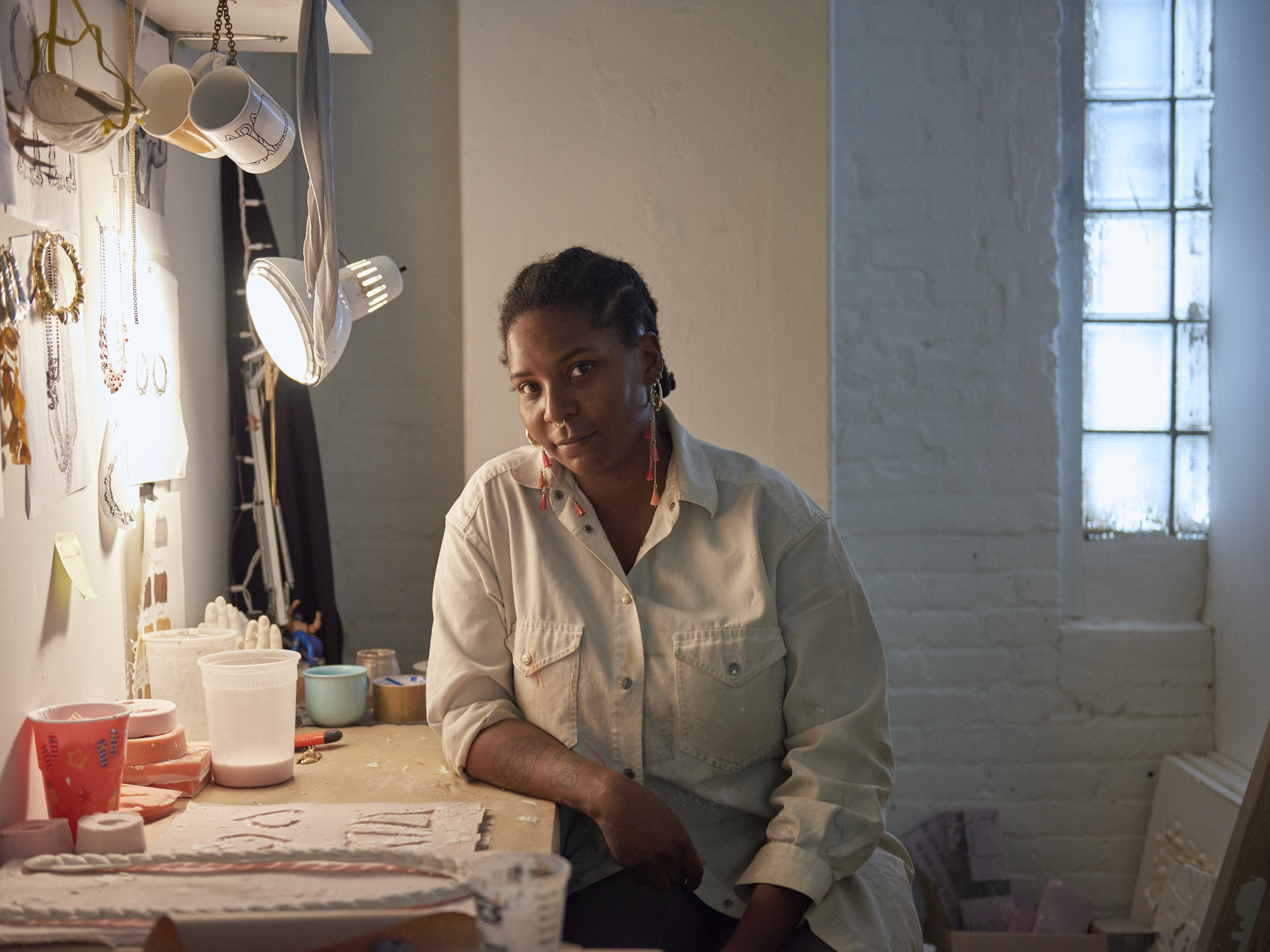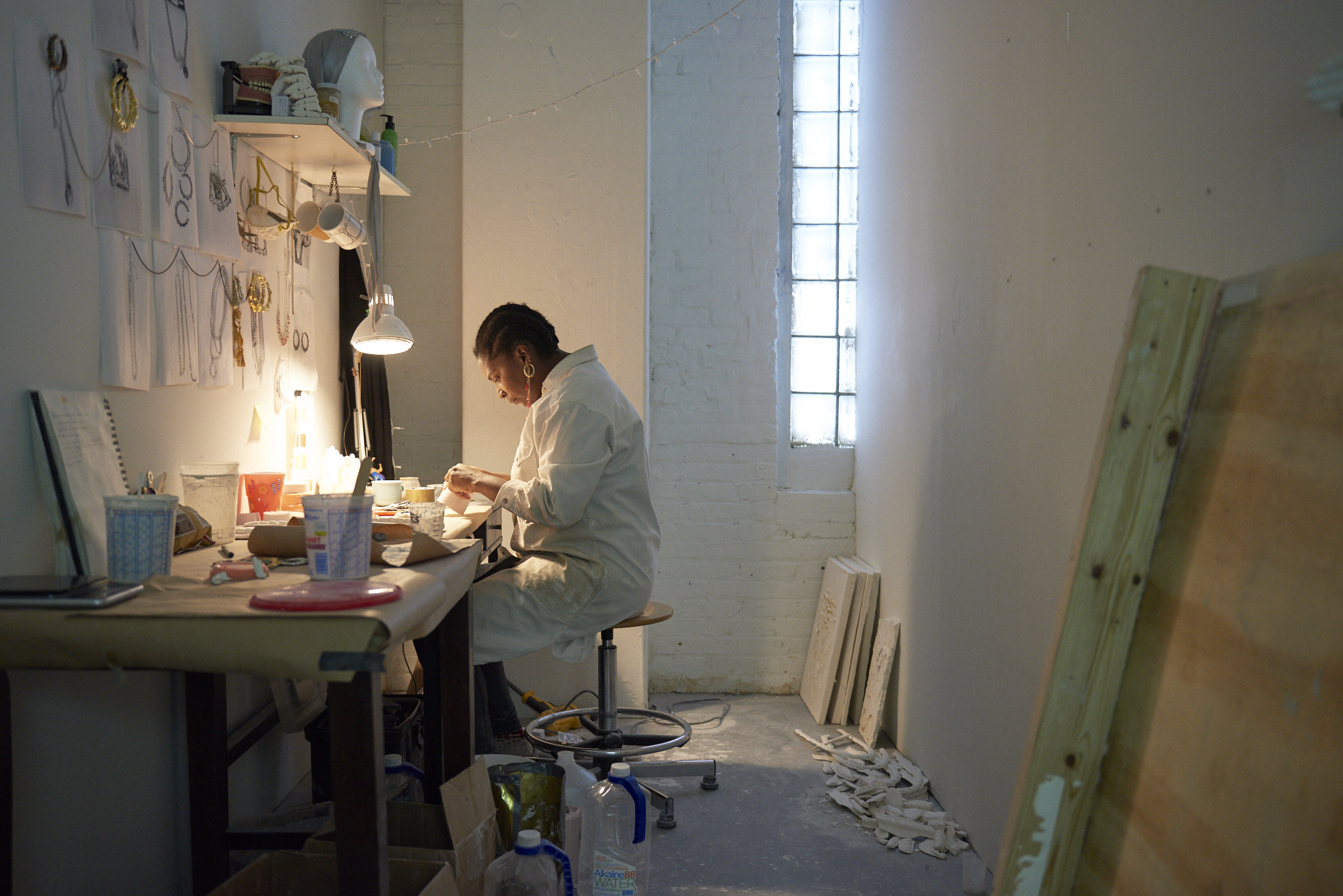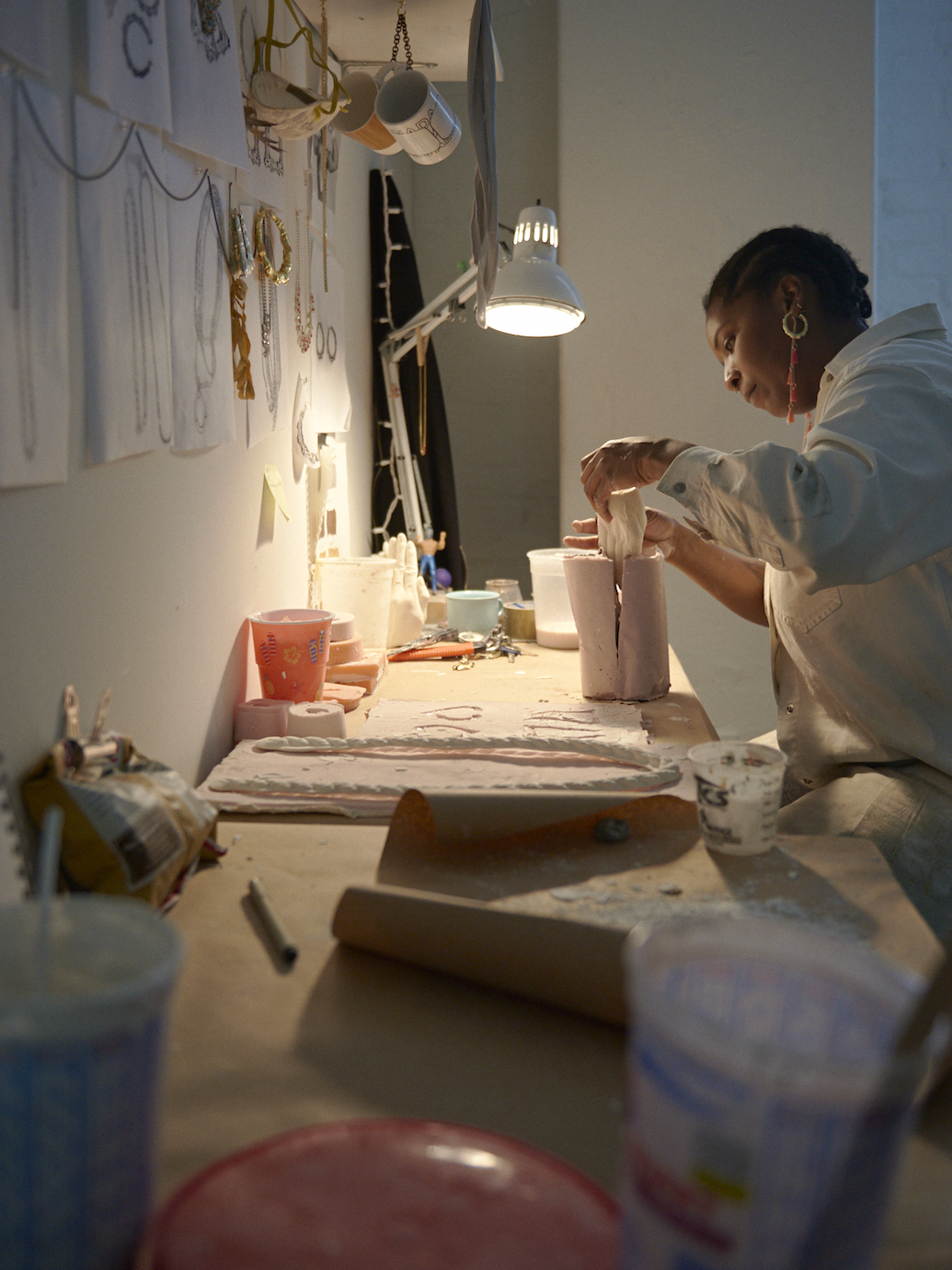
In LaKela Brown’s work, the markers of an adorned body become treasures and artifacts, archived forever. Her bas-reliefs of bamboo hoop earrings and gold teeth are often compared to historical relics, the way their removal from their original reference point—the body—abstracts them, gives them a history that’s just traceable. But, says Brown, “While I am definitely referencing an important part of black hip-hop culture from the past, I also feel that these objects have a current and continuing connection to the culture they’re closely associated with.” Perhaps it’s more accurate to say her archive is a living one.
The Detroit-born, Brooklyn-based artist has long turned objects into plaster reliefs: rope chains, chicken heads (a reference to the term), gold grills; at Surface Possessions, her new solo show at 56 Henry, the clusters of objects become denser, flanked by plaster hands, convex and concave castings melding into each other. In a release for the show, Brown writes: “In LL Cool J’s 1990 song ‘Around the Way Girl,’ he describes his ideal mate as ‘a girl with extensions in her hair / bamboo earrings / at least two pair.’ This aesthetic was embodied by artists like Salt-N-Pepa, MC Lyte, and Queen Latifah, as well as the women that I lived with and around…Growing up it felt intrinsically understood that this style belonged to me, to black people.”
On view through June 16, we spoke to Brown about Surface Possessions, her shifting process, and childhood memories.
Do you remember wearing and using these items—bamboo hoops, etc.—as a child? I’m curious about the sort of joy and pleasure you took in them before. When I was a little kid in the ’80s and ’90s, I watched music videos featuring artists like MC Lyte and Salt-N-Pepa, and it was common to see them wearing this style of earring that I frequently use in my artwork: doorknocker earrings with the bamboo motif.
When my sister first saw the new work that I was making on Instagram, she posted a story telling me about her first pair that my mother bought for her. I was very young, so my mother thought that I should have a small pair. Mine were real gold and I loved them so much that I would take them off to play with them, but then I lost them. Part of the way that I started making the compositions was thinking about how I would play with the earrings—make shapes with them, stack them, and link them. My mother, aunts, cousins, and every woman around me seemed to wear them. Eventually, after my mother felt I was ready, she bought me another pair.

I was curious if you made art as a child, too—what your relationship to your own creativity was like growing up. I have a strong memory from when I was really young and spending time with my mother. She drew a picture of a dog and I remember having a feeling of shock in my body at the realization that people could make images. I knew in that moment that I wanted to draw and make images, too.
For most of my life in school, I was not a good student. I struggled with attention, comprehension, and absorption. My grades were consistently average or below. But I always had an A+ in art. My art teacher was so impressed by my dedication that she actually couldn’t believe that I was a terrible student in all other areas. I never went to any art classes for kids, museums or galleries growing up—drawing was just a thing that I did for myself, something that I felt good at and enjoyed. Later I learned how to be a better student, and how to apply those lessons to my art practice.
The work in Surface Possessions doesn’t deviate completely from your last show, but was the process at all different? Some of it has a stacked, clustered quality. Yes, the work in Material Relief with Reyes/Finn Gallery and Surface Possessions have a similar style, theme, and material, but the process and ideas have evolved and shifted. The work in this current show is larger; even the smaller works are larger than the earlier work, and as you observed the compositions have become more clustered, overlapping, and stacked.
Making this work has taught me a lot technically about my own taste and communication. My understanding over the last few years since I’ve been making these reliefs has grown substantially, and I’ve learned how to use clusters to enrich the compositions with movement, and simple compositions to emphasize the richness contained in the objects as well.
How do your family and childhood friends feel about your work as an artist? Do they see themselves in the work? My family and friends absolutely see themselves in my work. So does anyone that I’ve talked to who grew up around the same time immersed in inner city life or hip-hop music, similarly to me. People says things to me like, “I can remember when…” or “I used to have these in all different shapes…” They often have stories, and it’s so energizing to hear them.

Does creating your work feel ever like an act of archiving? Yes, and actually, I wanted to become an archivist as my day job before I dropped out of Library Science school—although the culture that these items came from is still thriving, even if it’s evolved. While I am definitely referencing an important part of black hip-hop culture from the past, I also feel that these objects have a current and continuing connection to the culture they’re closely associated with, and not just a nostalgic representation of what used to be.
I love the plaster hand in “Composition with Bamboo Earrings, Impressed with Gold, Overlapping with Hand.” It feels like your own hand. It is actually a casting that I made from a mold of my own hand. Before I began making this relief work, I was making pretty traditional figurative sculpture, and sometimes parts find their way into this work. For this work specifically, the hand is the embodiment of desire, aspiration, hope, work, and fear. It also adds a piece of the missing human that the jewelry implies. It’s definitely a celebration of black American aesthetics that I grew up with. But I am also interested in exploring how these objects inform or indicate everything from gender expression to class and ownership.
LaKela Brown: Surface Possessions is on view at 56 Henry through June 16.










 in your life?
in your life?

